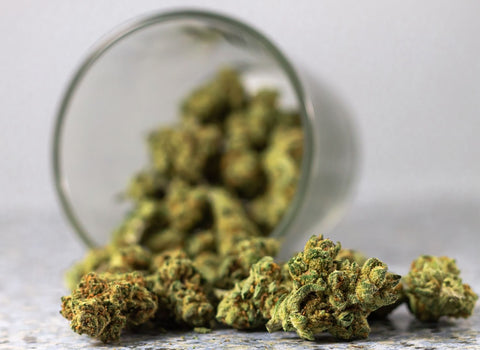
Low doses of THC and CBD may help fight leukemia and improve the quality of life for many cancer patients going through chemo. A Bosnian Journal of Basic Medical Sciences article revealed that THC and CBD may slow tumor growth, encourage cancer cell death, and prevent tumor spread.
In a 2013 Case Reports Oncology case study, a 14-year-old girl with an aggressive form of acute lymphoblastic leukemia saw her cancer cell count drop from 374,000 down to zero in just 5 days after starting treatment with medical cannabis extract.
While we should be careful not to jump to assumptions from a single case, other evidence indicates that low-dose cannabis holds promise for leukemia patients.
Whether you're battling an illness or simply looking for a natural way to fight stress and anxiety, relieve pain, or support your overall health, our low-dose THC edibles might be just the thing you need.
Find out how microdosing cannabis has more health benefits than higher doses.
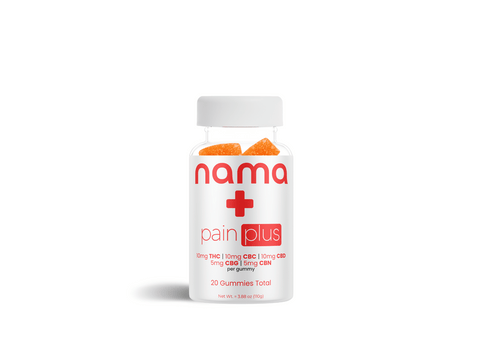
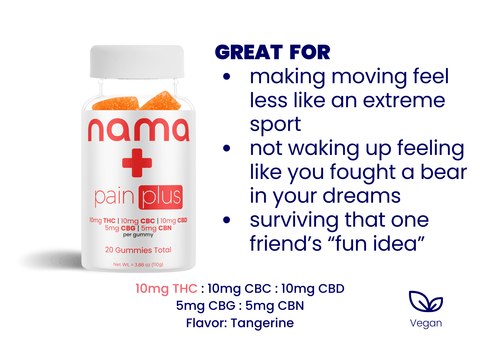
THC: 10 mg | CBC: 10 mg | CBD: 10 mg | CBG: 5 mg | CBN 5mg
What is leukemia?
Leukemia is a cancer of the blood and bone marrow in which abnormal immature white blood cells grow uncontrollably. Within the bone marrow, instead of developing into healthy adult blood cells, these undeveloped white blood cells, known as “blasts”, rapidly proliferate.
The bone marrow is the spongy inner part of bones where blood cells are produced. It contains hematopoietic stem cells that normally mature into red blood cells, white blood cells, and platelets.
White blood cells, or leukocytes, identify and defend against invading bacteria, viruses, and other causes of infection. They consist of different cell types such as lymphocytes, neutrophils, and eosinophils, all of which perform specialized roles. White blood cells generate antibodies and release cytokines to coordinate the immune response.
Normally, white blood cells develop from precursor cells or immature cells, called blasts, in the bone marrow. In people with leukemia, normal white blood cell maturation is disrupted, causing blasts to rapidly proliferate. These excess, immature blasts crowd out normal blood cell production, impeding the body's ability to generate sufficient red blood cells (erythrocytes) to carry oxygen and platelets (thrombocytes) to facilitate proper blood clotting.
Leukemia can lead to anemia, bleeding problems, and weakening of the immune system. While it does not usually form solid tumors, the surge of abnormal cells still causes issues throughout the body.
What are the different types of leukemia?
Leukemia can be categorized based on the type of blood cell affected and how rapidly the disease progresses.
Acute leukemia is characterized by rapid cell division and disease progression. Patients can feel sick within weeks. This type of leukemia is life-threatening and is the most common cancer in children. The most common forms of acute leukemia are:
- Acute lymphocytic leukemia (ALL) starts from abnormal lymphoid or lymphoblast cells. It is the most common childhood cancer.
- Acute myeloid leukemia (AML) develops from abnormal myeloblasts that fail to properly mature. It is more prevalent in adults.
Chronic leukemic cells behave as both immature and mature blood cells: the cancerous white blood cells exhibit qualities of both immature blast cells (rapidly dividing and nonfunctional) as well as more mature cells that have partially developed to carry out some normal white blood cell duties. This type typically worsens slowly with patients remaining relatively asymptomatic for years. Chronic leukemia is more common in adults.
- Chronic lymphocytic leukemia (CLL) originates from abnormal lymphocytes, a type of white blood cell involved in immune responses. This type is usually diagnosed at later stages when lymphocyte counts are very high.
- Chronic myeloid leukemia (CML) arises from myeloid progenitor cells that give rise to granulocytes (neutrophils, basophils, eosinophils). Granulocytes fight infection and disease by initiating immune responses. The slow buildup of faulty granulocyte cells eventually impacts other blood cell types.
What are the symptoms of leukemia?
Leukemia can cause a variety of symptoms as abnormal cells accumulate and disrupt normal blood cell function. In their early stages, chronic types of leukemia may not have noticeable symptoms.
Common symptoms of leukemia include:
- Fatigue and weakness from anemia
- Fever and chills
- Unintended weight loss and loss of appetite
- Swollen lymph nodes, liver, or spleen from cell buildup
- Easy bleeding or bruising including nosebleeds and bleeding gums
- Bone and joint pain.
- Headaches or vomiting
- Shortness of breath from anemia or spleen enlargement
- Frequent infections that do not resolve or continuously recur
- Tiny red spots called petechiae under the skin
What causes leukemia?
There is no definitive cause identified for most cases of leukemia, but certain risk factors may increase susceptibility. Potential contributors to the cell mutations that cause rapid growth of abnormal blood cells include:
- Radiation exposure: high doses of radiation exposure from nuclear matter or cancer radiation therapy.
- Chemical exposure: workplace exposure to benzene or previous treatments of chemotherapy.
- Genetic conditions such as Down syndrome and Li-Fraumeni syndrome.
- Chance DNA mutations: many leukemias arise from random, chance errors as cells divide.
- Viruses.
- Smoking tobacco.
- Family history of blood cancers.
- Aging and race also influence risk.
How is leukemia treated?
Thanks to medical advancements, leukemia survival rates have improved significantly over the past few decades. Research shows that the overall 5-year survival rate for patients with leukemia is 65% in the United States. These rates differ significantly depending on the specific subtype of leukemia. For chronic lymphocytic leukemia, the survival rate is 88%, while for acute myeloid leukemia, it is a discouraging 31%.
Conventional treatment focuses on eliminating the abnormal blood cell population and minimizing complications. Common leukemia treatments include:
- Chemotherapy
- Targeted therapy
- Stem cell transplant
- Immunotherapy
- Radiation
- Supportive care
Many people with cancer have started microdosing cannabis as a complementary therapy to traditional cancer treatments and to help alleviate chemotherapy-related side effects. Cannabis compounds show promise in blocking cancer cell signals that enable them to grow and spread.
While not a standalone treatment, small amounts of cannabis can provide multi-level comfort and support throughout your battle with cancer.
What does the research say about the effects of cannabis on leukemia?
Research shows that even the smallest amounts of tetrahydrocannabinol (THC) increased the sensitivity of leukemia cells to the cytotoxic chemicals used in the study. This led to a 50% decrease in the amount of therapy drugs needed to kill cancer cells. The results imply that “for the first time that a combination approach with THC and established cytotoxic agents may enhance cell death in vitro.”
Here’s what the available research has to say about the effects of cannabis on leukemia:
- A 2016 study showed that dronabinol—a synthetically-produced THC—inhibits proliferation in lymphatic and myeloid leukemia cell lines. Dronabinol was also able to induce cell apoptosis in leukemia cell lines. The study revealed “a novel aspect of dronabinol, a cannabinoid derivative, which displays remarkable antiproliferative as well as proapoptotic efficacy in a distinct leukemia patient cohort - in vitro and in ex vivo native leukemia blasts.”
- Indian researchers discovered a rapid, dose-dependent decrease in lymphoblastic blast cells in a child with high-risk acute lymphoblastic leukemia treated with oral cannabinoid extracts.
- A 2022 study found that a single dose of THC and cannabidiol caused a minor, temporary reduction in malignant B cells without inducing cancer cell death or inhibiting growth long-term in patients with indolent B cell lymphomas. However, the effects of cannabis lasted only for 24 hours.
- Canadian researchers showed the cytotoxic effects of cannabinoids on human leukemia cell lines. THC and CBD could induce apoptosis and inhibit cell proliferation. THC has demonstrated chemo-sensitization of malignant lymphocytes, while CBD promotes leukemia cell death through reactive oxygen species and ceramide accumulation.
Current clinical studies on the use of cannabis for treating leukemia are still in their early stages. The findings are promising, but more research is needed to confirm the efficacy and establish an effective dose to treat leukemia.
Cannabinoids and cancer: an antitumor strategy
Hinz and Ramer explained that cannabis has therapeutic potential in fighting cancer. They present evidence that THC and CBD can inhibit tumor progression through different antitumor mechanisms including blocking proliferation, invasion, metastasis, angiogenesis, and chemoresistance as well as inducing apoptosis and autophagy.
Let’s look at why Delta 9 and cannabidiol go so well together, especially for patients with leukemia.
THC and CBD are anti-metastatic
Metastasis is the spread of cancer cells from the original tumor site to other parts of the body. THC and CBD seem to have strong anti-metastatic properties: they may inhibit metastasis, stop cancer cells from migrating, invading tissues, or stimulate new blood vessel formation to "feed" remote tumors.
Preet, et. al. found that “THC was able to inhibit tumor growth and lung metastases in a murine model of lung cancer.” Honarmand, et. al. suggested that “treatment with CBD reduced colon cancer cell proliferation, induced apoptosis, and also had anti-metastatic and anti-angiogenesis effects.”
As you can see, cannabis may even help fight lung cancer and colon cancer.
Cannabis has pro-apoptotic effects
Apoptosis is the programmed cell death or self-destruction of cells. When it comes to cancer cells, it’s a good thing. A 2005 study showed that Delta 9 THC can promote apoptosis in glioblastoma multiforme by selectively targeting GBM cells without significantly affecting normal brain cells. The results revealed that “treatment with THC produced dose-dependent inhibition of cell viability and proliferation.”
An observational study found that a synthetic cannabinoid reduced the amount of phosphorylated BAD protein. Phosphorylation of BAD has been linked to cancer cell survival pathways and drug resistance. The increase of proapoptotic BAD activity is important for the inhibition of survival pathways of tumor cells.
THC and CBD inhibit the angiogenesis of cancer cells
Angiogenesis is the formation of new blood vessels from existing ones. This process is essential for tumor growth and metastasis, as new blood vessels provide oxygen and nutrients that cancer cells need to spread and thrive.
THC and CBD may interfere with signaling pathways that stimulate new vessel growth. They may also inhibit the release of pro-angiogenic factors from tumor cells that encourage new blood vessel formation. Cannabis seems to inhibit the expression of pro-angiogenic factors and an enzyme known as matrix metalloproteinase-2 in malignant brain tumors.
…at least two mechanisms may be involved in this cannabinoid action: the direct inhibition of vascular endothelial cell migration and survival as well as the decrease of the expression of proangiogenic factors (vascular endothelial growth factor and angiopoietin-2) and matrix metalloproteinase-2 in the tumors. (Blázquez, et. al.)
It seems that cannabis compounds could also potentially support the immune system in its fight against cancerous tumors. The endocannabinoid system (ECS) plays an important role here.
Product QUIZ
Need help deciding what product is best for you? Take our quiz, just three questions until your perfect match!
How does the endocannabinoid system fight cancer?
The endocannabinoid system is a complex network of chemical signals and receptors that “serves pivotal roles in a diverse range of physiological and pathophysiological states, including behavior, pain, schizophrenia, obesity, Alzheimer's disease, multiple sclerosis and cardiovascular disease.” (Lerner, et. al.)
Its main role is to maintain homeostasis by regulating important bodily functions:
- Mood
- Sleep
- Appetite
- Pain perception
- Reproductive health
- Immunological response
While our bodies naturally produce endocannabinoids, phytocannabinoids found in plants like cannabis interact with our ECS in the same way. They bind to the endocannabinoid receptors and influence pain management, sleep, appetite, the immune response, and many other biochemical changes in the body. They target the ECS and slow tumor growth.
Delta 9 has a similar structure to these endocannabinoids and binds strongly to cannabinoid receptors, specifically CB1 and CB2 receptors. This binding triggers cellular responses that produce diverse effects in the body.
While higher doses may cause psychoactive effects, low amounts of THC produce a wide range of therapeutic benefits. That’s why we stick to small, controlled amounts in our gummies and drinks. The low-dose cannabis edibles help inhibit tumor cell proliferation, reduce tumor invasion and metastasis, and induce apoptosis in tumor cells through intricate interactions with the ECS.
Fraguas-Sánchez, et. al. discovered that human leukemia cells expressed high levels of CB2 receptors. This means that leukemic cells are rich in CB2 receptors that cannabinoids can target to induce cancer cell death.
Many of our products contain low amounts of Delta 9. Ten milligrams of THC and CBD in our Euphoria gummies give you a mild euphoric experience, pleasant pain relief, and release from stress and anxiety.
How does cannabis alleviate symptoms of chemotherapy?
Chemotherapy and other treatments for cancer can have a substantial negative impact on the lives of patients with cancer. Low doses of THC seem to act synergistically with cytotoxic chemicals and boost their efficiency against cancer. Many people turn to cannabis to alleviate chemotherapy-related side effects.
Here’s how our low-dose edibles with THC, CBD, and other cannabis compounds can help cancer patients find relief:
- Cannabis edibles help alleviate pain. Chemotherapy often comes with significant chronic pain that stems from painful nerve damage or neuropathy. A 2015 study found that cannabis might be an effective treatment to relieve neuropathic pain, arthritis pain, and cancer pain. THC and CBD also have anti-inflammatory properties that can relieve pain at its source.
- THC stimulates appetite and reduces weight loss in patients. According to research, THC and CBD “have indications as appetite stimulants, antiemetics, cannabis addiction, sleep apnea and analgesics and are approved by the FDA for HIV/AIDS-induced weight loss of appetite and chemotherapy-induced nausea and vomiting.”
- CBD is known for its relaxing and anti-anxiety effects—and that’s exactly what cancer patients need day-to-day. Chemotherapy can be harsh on patients and have a multitude of adverse effects..
- Low-dose cannabis reduces nausea and vomiting. The cytotoxic chemotherapy drugs designed to kill cancer cells also damage healthy, fast-dividing cells in the body, like those in the gut, triggering nausea and vomiting. A 2020 clinical trial found that “the addition of oral THC:CBD to standard antiemetics was associated with less nausea and vomiting.”
As you may have noticed, combinations of THC and CBD show enhanced anti-cancer action over each cannabinoid alone, with potential tumor cell selectivity over non-transformed counterparts. Let’s talk about the entourage effect.
What is the entourage effect?
The entourage effect is the cannabinoid synergy that has shown therapeutic benefits in treating cancer, alleviating chronic pain and migraines, inducing relaxation, and reducing stress while staying below the threshold for psychoactivity. Cannabinoids taken together enhance each other’s effects and bring more therapeutic benefits than each one in isolation.
With higher concentrations of THC and CBD (10 mg per edible), nothing says relief from nasty side effects of cancer therapy quite like our Euphoria gummies. Experience the entourage effect and enjoy the burst of flavors.
Low-dose THC found in our full-spectrum gummies is perfect to lift your spirit gently without intoxication. Check out more reasons why our entourage effect edibles are the ultimate cannabis companion.
What are the best edibles for leukemia and chemo patients?
Our selection of cannabis edibles blends the finest, natural ingredients, 100% American hemp, and delicious flavors. While you enjoy these tasty treats, they may also be hard at work easing your chemotherapy-related symptoms and uplifting your spirit through treatment.
- Feeling overwhelmed during leukemia treatment? Try our Relax Plus gummies for a gentle mood lift without heavy sedation. With 25mg CBD and 5mg THC in each juicy watermelon bite, they blend multiple ways cannabis can calm the mind, ease anxiety, and help your heroic body relax through chemo treatments.
- Our Bliss gummies are made for fun with just a hint of Delta 9 to relax you. While you enjoy these sweet melon cubes for uplifting chill vibes, they could silently reinforce your body too to fight off cancer and get you through treatment.
- If you’re feeling run down after chemo, our low-THC Energy gummies might help. Only 2.5 mg of Delta 9 will produce a mild high, perfect for uplifting your mood. They reinforce your body against the free radicals and inflammation that chemo brings.
- Leukemia treatment can give you trouble sleeping. Our lavender-infused Sleep Plus gummies pack an extra punch to help your mind unwind. With a calming blend of mellow THC, relaxing CBD, and sleepytime melatonin, they'll send you to dreamland in no time.
- Who says you have to eat your cannabis to achieve comfort and relaxation? Our low-THC drops offer a way to find balance through your leukemia treatment with every sip of your favorite non-alcoholic beverage. A dropper in your lemonade or morning tea could provide the extra support you need to steady your days during chemo.
If you’re feeling like mixing up some flavor, our cannabis drops play nicely with fruity mocktails or herbal lemonades. Explore our collection of drink recipes that blend the benefits of THC, CBD, and your own creative spice.
Try our buzzy twist on the classic mojito, or delight your palate with our creamy winter mint mocktail.
Is microdosing cannabis edibles legal?
Delta 9 THC is legal on a federal level in the US if products comply with the following conditions stipulated by the 2018 Farm Bill:
- The THC content cannot exceed 0.3% of THC by dry weight
- The Delta 9 must be derived from the hemp plant, not marijuana
The 2018 Farm Bill made THC and CBD products derived from hemp with less than 0.3% THC federally legal. CBD products containing more than 0.3% THC are still federally illegal—but legal under some state laws.
Read up on the state-by-state legality of Delta 9 to make sure you know the legal status of your favorite Delta 9 gummies in your state.
Cannabis for leukemia FAQ
Studies have shown that medicinal cannabis can be a safe and effective complementary therapy for cancer patients. It has been used to help manage side effects of cancer treatment and cancer symptoms such as chronic pain, nausea, appetite loss, anxiety, and more. Small amounts of THC and CBD exhibit low toxicity with minimal risk of overdose. They have even demonstrated antitumor effects by inhibiting cancer cell proliferation, inducing cancer cell death, slowing metastasis, and cutting off blood supply to tumors.
Read more about the effects of cannabis on human breast cancer cells
Cannabinoids from cannabis plants—also called phytocannabinoids—such as THC, CBD, CBN, and others can affect cancer cells through multiple mechanisms.
- They act on cannabinoid receptors CB1 and CB2 as well as other pathways to dampen cell signaling pathways that cancer cells need to survive, grow, and spread. This includes reducing the expression of vascular endothelial growth factor to cut off blood supply, altering important cell cycle and apoptosis regulators to induce cancer cell death, inhibiting key proliferation signals like the MAPK pathway, and more.
- At the same time, cannabinoids appear to increase cancer cell sensitivity to immune detection and cell stress.
- This combination of dampening cancer cell survival while enabling their destruction translates to reduced tumor progression in human cell lines and animal studies.
Early research and anecdotal patient reports suggest that CBD is safe and potentially beneficial to use alongside chemotherapy. CBD may help ease common chemo side effects such as chronic pain, nausea, nerve damage, and appetite loss through its analgesic, neuroprotective, and anti-inflammatory effects.
Some studies also show CBD can synergize with and enhance the tumor cell-killing effects of certain chemotherapy drugs. In a study on human head and neck squamous cell carcinoma, CBD was found to enhance the cytotoxicity of anti-cancer drugs such as cisplatin, 5-fluorouracil, and paclitaxel.
CBD may even allow effective treatment with lower chemotherapy doses in some cases. A 2021 study suggests that “as the development of chemoresistance in ovarian cancer results in treatment failure, the potential for CBD to augment the efficacy of conventional chemotherapeutic and epigenetic drugs is a topic of significant importance.”
Read about the effects of cannabinoids on ovarian cancer.
Cannabinoids have been shown to influence both innate and adaptive immune system cells and inflammation pathways. The effects depend greatly on factors like dosage: lower doses of THC may enhance immunity, while high doses can suppress immune function. CBD also exhibits immunomodulatory effects by regulating immune cell migration patterns and cytokine production. This ability to bi-directionally tune immunity likely contributes to the wide-ranging therapeutic versatility of medical cannabis.
Some animal studies indicate that certain cannabis extracts may stimulate the growth of new neurons (neurogenesis) in key memory and emotion-processing regions of the brain like the hippocampus and prefrontal cortex. These effects likely depend on the exact cannabis formulation, cannabinoid dose, duration of exposure, and period of brain development.
Emerging evidence also suggests potential cognitive benefits of microdosing cannabis, as extremely low doses of THC appear to reduce beta-amyloid plaques, neuroinflammation, and oxidative stress involved in Alzheimer’s disease progression and dementia. By tuning endocannabinoid tone, medical cannabis may help preserve neuronal integrity and function across a range of neurodegenerative conditions.
In laboratory models ranging from diabetic neuropathy to traumatic brain injury, CBD demonstrates clear neuroprotective qualities and improved neuronal functioning under the effects of many neurodegenerative diseases. Some cutting-edge research also shows CBD can stimulate new oligodendrocyte formation to potentially re-myelinate damaged neurons.
While extremely promising, there is still much work needed to precisely translate these nervous system regenerative effects into substantially improved sensory and motor nerve structure, function, and healing in patients. Standardized CBD formulations and controlled clinical studies are key next steps.
Advanced cancer patients may benefit from small amounts of cannabis: THC and CBD may ease some common physical and mental burdens that accrue while potentially slowing the disease’s progression. Full spectrum formulations allow cannabis users to pinpoint effective ratios of THC and CBD tailored to their needs. Cancer often brings unrelenting, severe pain. Yet microdosed THC can relieve bone, nerve, and tissue pain allowing patients tranquility. The anxiolytic effects of cannabis may help fight stress and anxiety.
Beyond symptom management, emerging oncology research shows purified cannabinoids impart antitumor properties potentially able to slow proliferation and metastasis in cases conventional treatment cannot.
While moderate cannabis consumption shows no increased breast cancer risk in meta-analyses, cellular evidence paints a more nuanced picture regarding prognosis. Whether inhaled, ingested, or topically applied, bioactive phytocannabinoids like THC exhibit potent antitumor effects. Studies in cellular and animal breast cancer cell line models show that cannabis compounds may block signals for angiogenesis and epithelial-to-mesenchymal transition, eliminate malignancies through apoptosis and autophagy, and mitigate chemoresistance.
The precise impact on human patients remains unclear. Individual variations in cannabinoid receptor expression related to disease severity also confound forecasting utility as prognostic biomarkers.
Top Sellers
New? Start with our Ultimate Sampler!

THC: 10 mg | CBC: 10 mg | CBD: 10 mg | CBG: 5 mg | CBN 5mg
Resources
Dariš, B., Verboten, M. T., Knez, Ž., & Ferk, P. (2019). Cannabinoids in cancer treatment: Therapeutic potential and legislation. Bosnian Journal of Basic Medical Sciences, 19(1), 14-23. https://doi.org/10.17305/bjbms.2018.3532
Leukemia Survival Rates. (n.d.). Roswell Park Comprehensive Cancer Center. https://www.roswellpark.org/cancer/leukemia/survival-rates
Hinz, B., & Ramer, R. (2022). Cannabinoids as anticancer drugs: Current status of preclinical research. British Journal of Cancer, 127(1), 1-13. https://doi.org/10.1038/s41416-022-01727-4
Preet A, Ganju RK, Groopman JE. Delta9-Tetrahydrocannabinol inhibits epithelial growth factor-induced lung cancer cell migration in vitro as well as its growth and metastasis in vivo. Oncogene. 2008 Jan 10;27(3):339-46. doi: 10.1038/sj.onc.1210641. Epub 2007 Jul 9. PMID: 17621270.
Honarmand, M., Namazi, F., Mohammadi, A., & Nazifi, S. (2018, August 27). Can cannabidiol inhibit angiogenesis in colon cancer? Comparative Clinical Pathology. https://doi.org/10.1007/s00580-018-2810-6
McAllister SD, Chan C, Taft RJ, Luu T, Abood ME, Moore DH, Aldape K, Yount G. Cannabinoids selectively inhibit proliferation and induce death of cultured human glioblastoma multiforme cells. J Neurooncol. 2005 Aug;74(1):31-40. doi: 10.1007/s11060-004-5950-2. PMID: 16078104.
Ellert-Miklaszewska, A., Kamińska, B., & Konarska, L. (2005, January 1). Cannabinoids down-regulate PI3K/Akt and Erk signalling pathways and activate proapoptotic function of Bad protein. Cellular Signalling. https://doi.org/10.1016/j.cellsig.2004.05.011
Blázquez C, Casanova ML, Planas A, Gómez Del Pulgar T, Villanueva C, Fernández-Aceñero MJ, Aragonés J, Huffman JW, Jorcano JL, Guzmán M. Inhibition of tumor angiogenesis by cannabinoids. FASEB J. 2003 Mar;17(3):529-31. doi: 10.1096/fj.02-0795fje. Epub 2003 Jan 2. PMID: 12514108.
Lerner, R., Lutz, B., & Bindila, L. Tricks and Tracks in the Identification and Quantification of Endocannabinoids. https://doi.org/10.1002/9780470015902.a0023407
Fraguas-Sánchez, A. I., Martín-Sabroso, C., & Torres-Suárez, A. I. (2018). Insights into the effects of the endocannabinoid system in cancer: A review. British Journal of Pharmacology, 175(13), 2566-2580. https://doi.org/10.1111/bph.14331
Liu, W. M., Scott, K. A., Shamash, J., Joel, S., & Powles, T. B. (2008, January). Enhancing the in vitro cytotoxic activity of Δ9-tetrahydrocannabinol in leukemic cells through a combinatorial approach. Leukemia & Lymphoma, 49(9), 1800–1809. https://doi.org/10.1080/10428190802239188
Kampa-Schittenhelm, K. M., Salitzky, O., Akmut, F., Illing, B., Kanz, L., Salih, H. R., & Schittenhelm, M. M. (2016, January 16). Dronabinol has preferential antileukemic activity in acute lymphoblastic and myeloid leukemia with lymphoid differentiation patterns. BMC Cancer. https://doi.org/10.1186/s12885-015-2029-8
Singh, Y., & Bali, C. (2013). Cannabis Extract Treatment for Terminal Acute Lymphoblastic Leukemia with a Philadelphia Chromosome Mutation. Case Reports in Oncology, 6(3), 585-592. https://doi.org/10.1159/000356446
Tomko, A. M., Whynot, E. G., Ellis, L. D., & Dupré, D. J. (2020). Anti-Cancer Action of Cannabinoids, Terpenes, and Flavonoids Present in Cannabis. Cancers, 12(7). https://doi.org/10.3390/cancers12071985
Hill KP. Medical Marijuana for Treatment of Chronic Pain and Other Medical and Psychiatric Problems: A Clinical Review. JAMA. 2015 Jun 23-30;313(24):2474-83. doi: 10.1001/jama.2015.6199. Erratum in: JAMA. 2016 Sep 6;316(9):995. PMID: 26103031.
Bilbao, A., & Spanagel, R. (2022, August 19). Medical cannabinoids: a pharmacology-based systematic review and meta-analysis for all relevant medical indications. BMC Medicine. https://doi.org/10.1186/s12916-022-02459-1
Grimison, P., Mersiades, A., Kirby, A., Lintzeris, N., Morton, R., Haber, P., Olver, I., Walsh, A., McGregor, I., Cheung, Y., Tognela, A., Hahn, C., Briscoe, K., Aghmesheh, M., Fox, P., Abdi, E., Clarke, S., Della-Fiorentina, S., Shannon, J., Stockler, M. (2020). Oral THC:CBD cannabis extract for refractory chemotherapy-induced nausea and vomiting: A randomised, placebo-controlled, phase II crossover trial. Annals of Oncology, 31(11), 1553-1560. https://doi.org/10.1016/j.annonc.2020.07.020
Go, Y. Y., Kim, S. R., Kim, D. Y., Chae, S. C., & Song, J. (2020, November 26). Cannabidiol enhances cytotoxicity of anti-cancer drugs in human head and neck squamous cell carcinoma. Scientific Reports. https://doi.org/10.1038/s41598-020-77674-y
Griffiths, C., Aikins, J., Warshal, D., & Ostrovsky, O. (2021, May 20). Can Cannabidiol Affect the Efficacy of Chemotherapy and Epigenetic Treatments in Cancer? Biomolecules. https://doi.org/10.3390/biom11050766
Ruver-Martins, A. C., Bicca, M. A., Maia, N. S., Pamplona, F. A., & Nascimento, F. P. (2022). Cannabinoid extract in microdoses ameliorates mnemonic and nonmnemonic Alzheimer’s disease symptoms: A case report. Journal of Medical Case Reports, 16. https://doi.org/10.1186/s13256-022-03457-w
nama CBD FDA & legal disclaimer
Our products are not intended to diagnose, treat, cure, or prevent any disease. They are not a replacement for prescription medications and have not been evaluated by the U.S. Food and Drug Administration (FDA).
The information provided on this website does not and is not intended to, constitute legal advice or any statement of the status of any laws. Any information, content, and materials available on this site are for general informational purposes only and are not intended to be relied upon for any purpose.
Readers of this website should contact their attorney to obtain advice concerning any particular legal matter, including decisions on what products are, or are not, legal to sell, possess, or consume. No reader, user, or browser of this site should act or refrain from acting based on the information on this site without first seeking legal advice from their counsel in the relevant jurisdiction.
About
Learn
Join us on this journey

© Copyright 2025 nama Products LLC. All Rights Reserved.
†These statements have not been evaluated by the Food and Drug Administration. These products are not intended to diagnose, treat, cure or prevent any disease. All information presented here is not meant as a substitute for or alternative to information from health care practitioners. Please consult your health care professional about potential interactions or other possible complications before using any product.
††The information provided on this website does not, and is not intended to, constitute legal advice or any statements of the status of any laws. Any information, content, and materials available on this site are for general entertainment purposes only, and are not intended to be relied upon for any purpose.

By clicking ‘Yes,’ you agree to our
Terms & Conditions and Privacy Policy
123 John Doe Street
Your Town, YT 12345
Store Hours
Sun: Closed
Mon-Fri: 9:00 - 17:00
Sat: 10:00 - 13:00
What to expect at pickup
Closed
Closing at 5pm
Closing at 5pm
Closing at 5pm
Closing at 5pm
Closing at 5pm
Closing at 1pm

![Euphoria Black Raspberry [10ct]](http://www.namacbd.com/cdn/shop/files/nama_black_raspberry_pouch.png?v=1715285306&width=480)
![Euphoria Black Raspberry [10ct]](http://www.namacbd.com/cdn/shop/files/nama_black_raspberry_nutrition_label.png?v=1715285313&width=480)
![Euphoria Kiwi Raspberry [10ct]](http://www.namacbd.com/cdn/shop/files/nama_kiwi_raspberry_pouch.png?v=1715285056&width=480)
![Euphoria Kiwi Raspberry [10ct]](http://www.namacbd.com/cdn/shop/files/nama_euphoria_kiwiraspberry_nutrition_facts.jpg?v=1715873960&width=480)
![Euphoria Triple Berry [10ct]](http://www.namacbd.com/cdn/shop/files/nama_euphoria_triple_berry_pouch.png?v=1715286095&width=480)
![Euphoria Triple Berry [10ct]](http://www.namacbd.com/cdn/shop/files/nama_euphoria_tripleberry_nutrition_facts.jpg?v=1715873950&width=480)
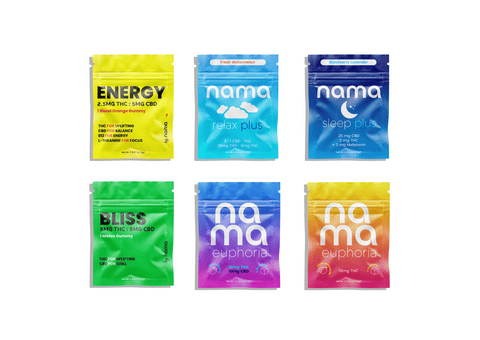
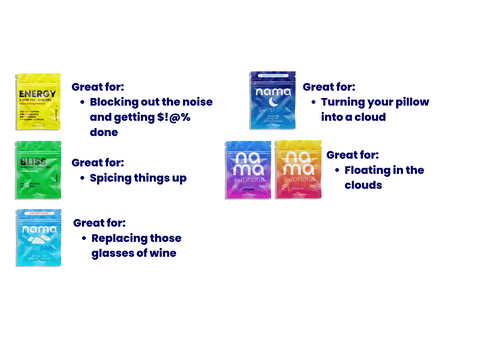
![Buzz Drops™ [THC Drink Drops]](http://www.namacbd.com/cdn/shop/files/nama_thc_buzz_drops.png?v=1711412866&width=480)
![Buzz Drops™ [THC Drink Drops]](http://www.namacbd.com/cdn/shop/files/buzz-drop-wine-comparison.png?v=1736882023&width=480)
![Buzz Packs™ [THC and CBD Powder Drink Mix]](http://www.namacbd.com/cdn/shop/files/nama_buzz_packs_thc_drink_pack_white_background.png?v=1741884660&width=480)
![Buzz Packs™ [THC and CBD Powder Drink Mix]](http://www.namacbd.com/cdn/shop/files/Buzz_Packs_Label.png?v=1741884660&width=480)
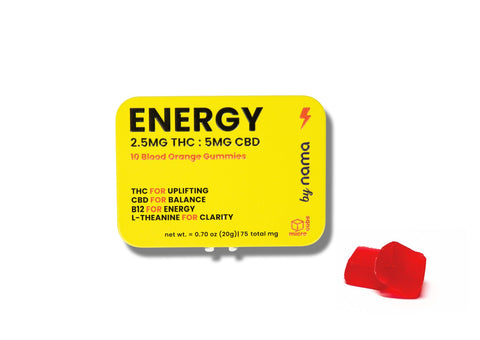
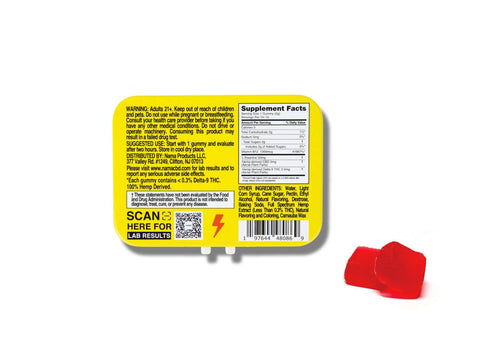
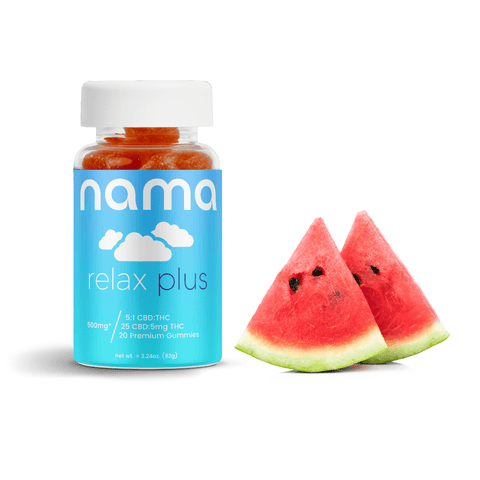
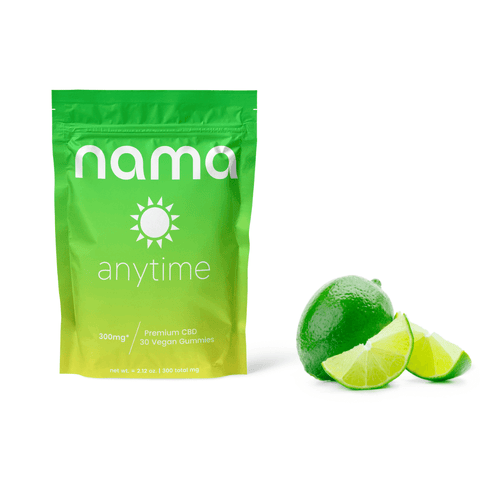
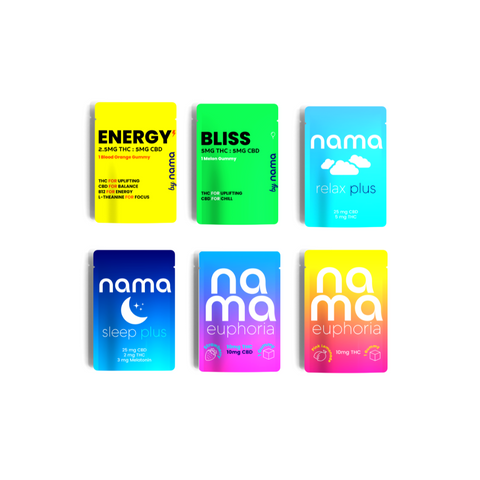
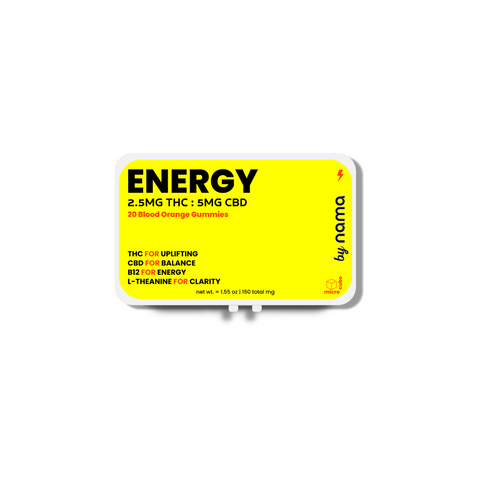
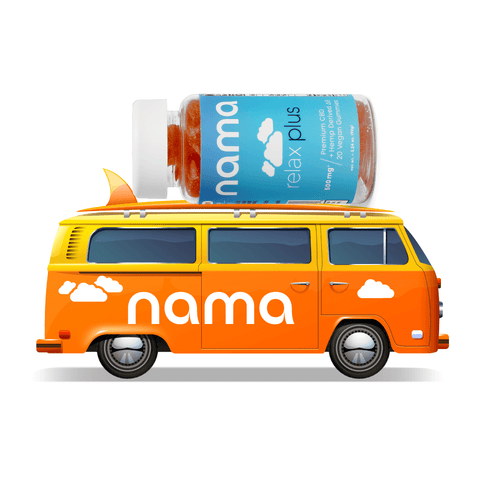
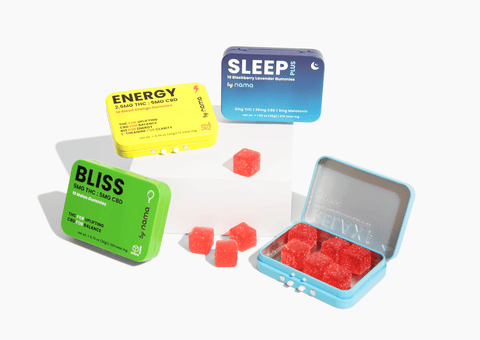
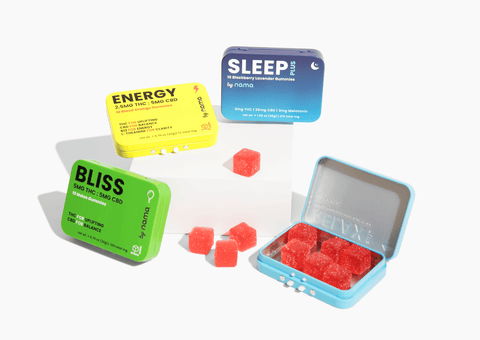
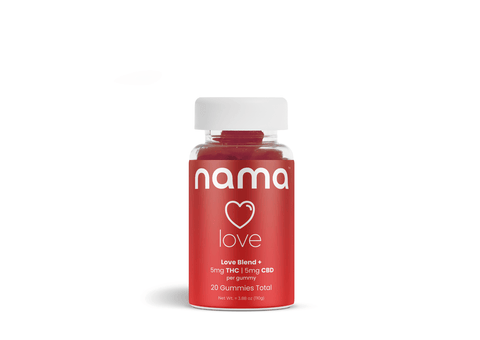
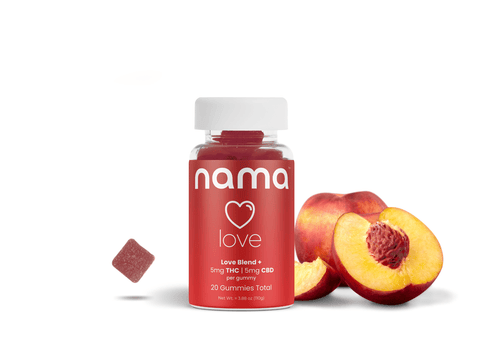
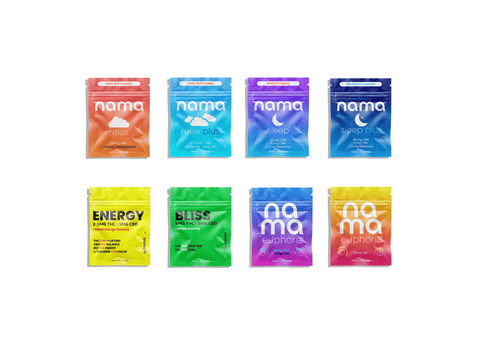
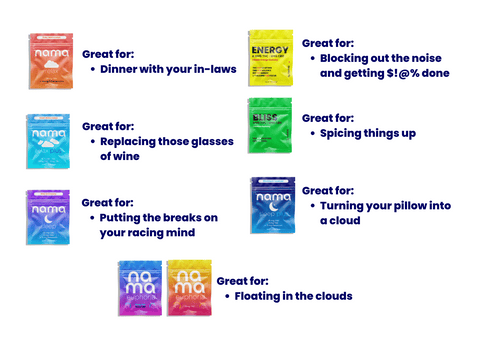
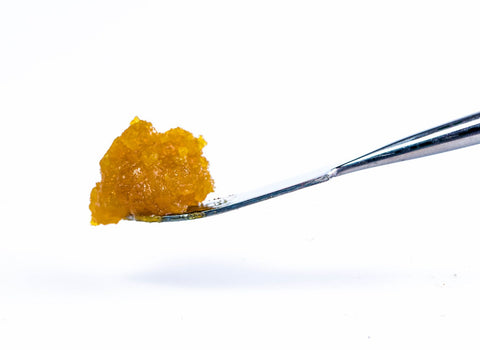
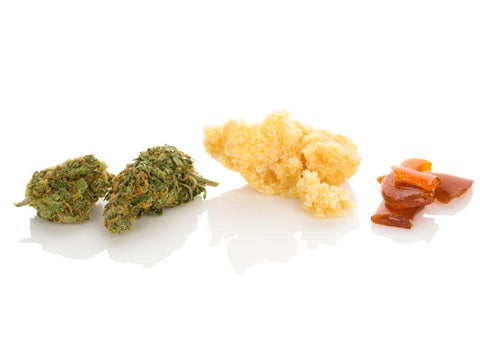

Comments (0)
There are no comments for this article. Be the first one to leave a message!